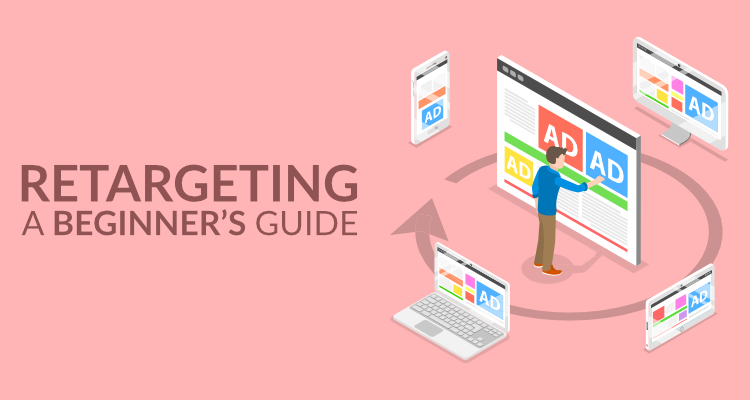In the world of digital advertising, standing out is more challenging than ever. With countless brands competing for consumer attention, it’s crucial to use effective strategies. One powerful technique that has gained popularity is retargeting campaigns. In this article, we’ll explore what retargeting is, how it works, and best practices for implementing successful campaigns in AdTech.
What is Retargeting?
Retargeting, also known as remarketing, is a digital advertising strategy that targets users who have previously interacted with your brand but did not complete a desired action, such as making a purchase. It allows advertisers to show tailored ads to these users as they browse other websites or social media platforms.
How Does Retargeting Work?
Retargeting relies on tracking cookies and pixel technology. Here’s a simplified breakdown of the process:
- User Interaction: A user visits your website or interacts with your app but leaves without converting (e.g., not making a purchase).
- Cookie Placement: A tracking cookie is placed on the user’s device, allowing you to identify them later.
- Ad Display: When the user visits other websites or social media platforms, the retargeting platform recognizes the cookie and serves them relevant ads based on their previous interaction with your brand.
By reminding potential customers of their interest, retargeting aims to re-engage them and encourage conversions.
Types of Retargeting Campaigns
There are several types of retargeting campaigns that advertisers can utilize, depending on their goals and the audience they wish to reach:
1. Standard Retargeting
This is the most common form of retargeting, where users who visited your website see ads while browsing other sites. These ads can be based on specific pages the user visited, such as product pages or service details.
2. Dynamic Retargeting
Dynamic retargeting takes standard retargeting a step further by displaying personalized ads featuring specific products or services the user viewed. For example, if a user looked at a pair of shoes, they would see ads for those exact shoes as they browse other sites.
3. Site Retargeting
Site retargeting targets users who visited specific pages on your website. You can tailor ads to guide them back to the exact products or services they showed interest in.
4. Email Retargeting
This approach involves using email lists to target users who have previously engaged with your brand. You can send personalized follow-up emails, reminding them of products they viewed or offering special promotions.
Benefits of Retargeting Campaigns
Retargeting campaigns offer several advantages for businesses looking to boost their marketing efforts:
1. Increased Brand Awareness
Retargeting keeps your brand top-of-mind for potential customers. By displaying ads across different platforms, you reinforce your brand message and enhance recognition.
2. Higher Conversion Rates
By targeting users who have already shown interest in your products, retargeting campaigns can lead to higher conversion rates compared to standard advertising methods. These users are more likely to convert because they are already familiar with your brand.
3. Cost-Effective Advertising
Retargeting allows you to focus your advertising budget on users who are more likely to convert. This targeted approach can result in a better return on investment (ROI) compared to broad-spectrum advertising.
4. Enhanced Customer Insights
By analyzing data from retargeting campaigns, you can gain valuable insights into customer behavior. Understanding which products or services are most frequently viewed can inform future marketing strategies.
Best Practices for Effective Retargeting Campaigns
To maximize the effectiveness of your retargeting campaigns, consider the following best practices:
1. Segment Your Audience
Not all users are the same. Segment your audience based on their behavior, such as pages visited or time spent on your site. This allows you to create tailored ads that resonate with each segment.
2. Create Compelling Ad Creatives
Design eye-catching and engaging ads that capture attention. Use high-quality images, clear calls-to-action (CTAs), and also concise messaging to encourage clicks.
3. Frequency Capping
Avoid overwhelming users with too many ads. Implement frequency capping to limit the number of times an ad is shown to the same user. This prevents ad fatigue and therefore ensures your messaging remains effective.
4. Monitor and Optimize
Regularly analyze the performance of your retargeting campaigns. Track metrics such as click-through rates (CTR), conversion rates, and ROI. Use this data in order to optimize your campaigns for better results.
5. Use Dynamic Product Ads
If you have an e-commerce store, consider using dynamic product ads for retargeting. These ads automatically showcase products that users have previously viewed, making them highly relevant and personalized.
Conclusion

Retargeting campaigns are indeed a powerful tool in the AdTech arsenal, allowing businesses to re-engage potential customers and drive conversions. By understanding how retargeting works, the different types of campaigns, and best practices for implementation, you can create effective strategies that enhance brand awareness and further boost sales. As you refine your retargeting efforts, you’ll find that reaching customers at the right time with the right message can further lead to significant improvements in your advertising outcomes.
Frequently Asked Questions on Retargeting Campaigns (FAQs)
1. What are retargeting campaigns?
Retargeting campaigns are advertising strategies that target users who have previously interacted with your brand but did not convert, displaying tailored ads to re-engage them.
2. How do retargeting campaigns work?
They work by placing tracking cookies on users’ devices after they visit your site, thus allowing advertisers to show relevant ads across other websites and platforms.
3. What are the benefits of using retargeting campaigns?
Benefits include increased brand awareness, higher conversion rates, cost-effective advertising, and also enhanced customer insights based on user behavior.
4. How can I optimize my retargeting campaigns?
You can optimize campaigns by segmenting your audience, creating compelling ad creatives, implementing frequency capping, and continuously monitoring as well as adjusting performance metrics.


